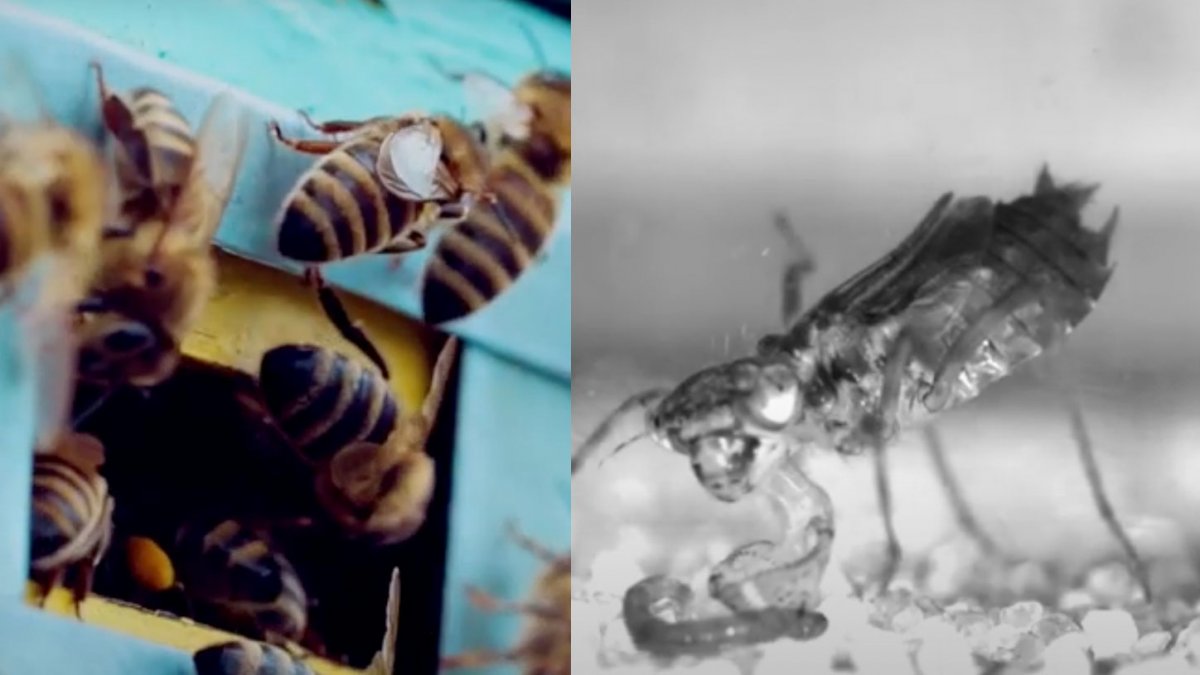Bioinspiration: Learning from dragonflies and bees
Source: Heise.de added 21st Jan 2021Bio-inspiration, i.e. imitating what nature shows, is not new to humans. The vast field that many researchers plow ranges from camouflage to the lotus effect to walking robots. Researchers from Germany and the Netherlands are now showing their work, which is about learning from bees and dragonflies.
Scientists at the Christian-Albrechts-Universität zu Kiel (CAU) have succeeded for the first time in fully deciphering the biomechanical functional principle of the dragonfly larvae ‘s trap mask, according to a statement from the CAU. The development of a bio-inspired robot, for which the team led by Dr. Sebastian Büsse from the Zoological Institute has adapted the functionality of the complex mouthpiece.
Synchronized, dual catapult system So far, researchers have assumed this that the safety mask must be mainly hydraulic propulsion. Rather, the propulsion functions via a controllable catapult system: “An inner, elastic structure in the dragonfly’s head that is tensioned by a muscle like a spring. The energy of the muscle is stored here. The two segments of the safety mask are connected to each other and are shared by one Mechanism locked and released “.
Dragonfly larvae attack prey.
Such systems are not uncommon in the animal kingdom, they are found, for example, in grasshoppers, cicadas or mantis shrimp. What is special about the dragonfly larva, however, is that a synchronized, dual catapult system has been described for the first time. “We visualized our hypothesis of the complex process using 3D animations of the processes in order to communicate them in a more understandable manner,” Köhnsen continues. It also became clear that the independent control of two catapults within one system means better control. The technology could be used in the development of particularly agile robots, “explains project manager Dr. Sebastian Büsse.
The Kiel researchers worked in two directions: By technically simulating a natural functional principle, something about nature to learn and develop something useful from it.
More elegant, faster drones While the people of Kiel are busy with the dragonfly larvae trap mask, researchers from the Technical University of Delft and the Westphalian University of Applied Sciences are fascinated by the flight of bees if you cross your path, you may have wondered how such a small insect can have such perfect flight abilities “, explains Guido de Croon, project manager from TU Delft.
He leaves like his fellow researchers vo n the assumption that the bees’ ability to navigate is also related to the information from their “optical flow” with which the bees quickly and accurately estimate the distance to other objects in their field of vision and their speed. They want to apply this to drone flights with the help of artificial intelligence, and according to their own information they have carried out initial successful tests. Not only has object recognition been improved, but also the speed of the robots.
Illustration of the optical flow.
“Small flying robots are very limited in terms of the sensors and processors they can carry,” explains Croon a direction in which his researchers go. “If they are to function as autonomously as a self-driving car, they have to fall back on a completely different type of AI – similar to the highly developed skills of insects.”
(anw)
brands: Bees Develop Dual First It New One other Prey Team Vision media: Heise.de
Related posts
Notice: Undefined variable: all_related in /var/www/vhosts/rondea.com/httpdocs/wp-content/themes/rondea-2-0/single-article.php on line 88
Notice: Undefined variable: all_related in /var/www/vhosts/rondea.com/httpdocs/wp-content/themes/rondea-2-0/single-article.php on line 88
Related Products
Notice: Undefined variable: all_related in /var/www/vhosts/rondea.com/httpdocs/wp-content/themes/rondea-2-0/single-article.php on line 91
Warning: Invalid argument supplied for foreach() in /var/www/vhosts/rondea.com/httpdocs/wp-content/themes/rondea-2-0/single-article.php on line 91
